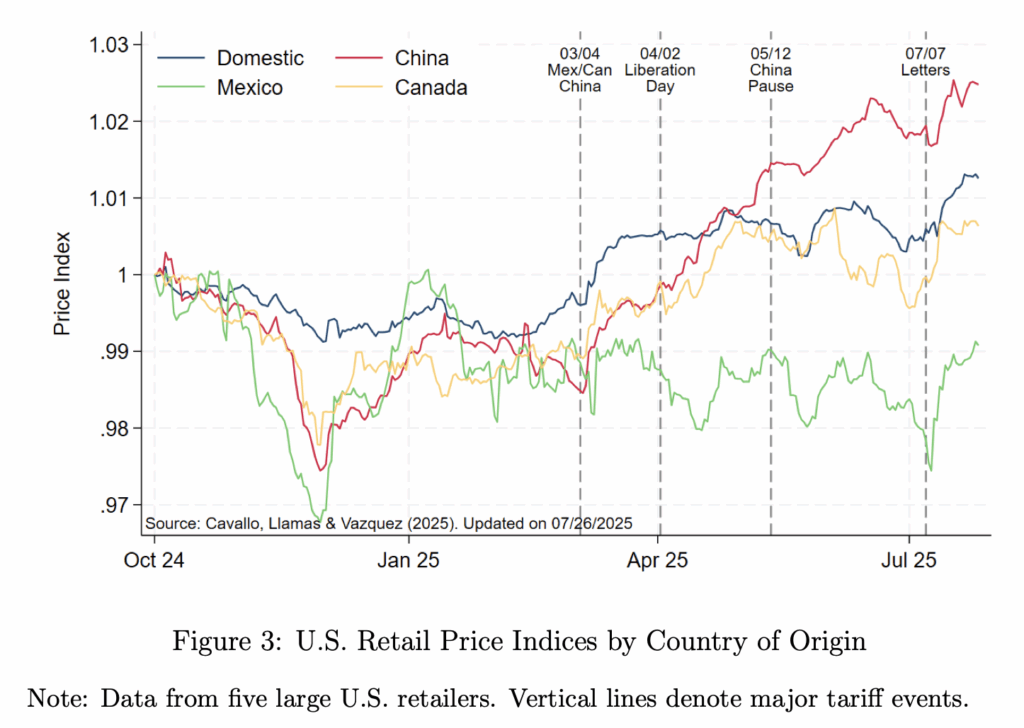Agriculture is central to sub-Saharan Africa’s economic development and growth, but environmental and climatic changes threaten the stability of Africa’s agricultural development. In order to better understand how climate change will impact African agriculture, a recent report by the McKinsey Global Institute models the impact of changing precipitation and temperature patterns on staple crop yields in Ethiopia and Mozambique.
The report highlights the heterogeneity of climatic changes, as temperature and precipitation, across the continent vary substantially by region (Figure 1). In terms of temperature, McKinsey predicts that northern and southern Africa will experience the greatest increases relative to preindustrial levels. By 2050, nearly the entire continent will be experiencing at least a 2.6-3.0 Celsius temperature increase, and large swaths of both northern and southern Africa are projected to exceed increases of 3.5 Celsius. Consequently, McKinsey projects that the severity of drought will evolve to be much more enduring and pervasive over time, particularly in northern and southern Africa.
Figure 1. Evolution of precipitation patterns (left) and temperature patterns (right) in Africa
Source: “How will African farmers adjust to changing patterns of precipitation?,” McKinsey Global Institute, 2020. Note: Climate projections based on RCP 8.5 CO2 concentration—a high emissions scenario that reflects no further decarbonization.
The authors write that they expect these facets of climate change to have a severe impact on African agriculture, particularly by increasing crop yield volatility. Using the context of coffee and wheat production in Ethiopia and corn (maize) and cotton in Mozambique, the authors evaluate crop yield volatility by contrasting the probability of a 10 percent or greater decrease in crop yields in the present and 2030.
Figure 2 reveals the probability of declining yields by crop and country and categorizes the positive and negative climatological drivers behind the shifting yields. Notably, unlike the other staple crops researched in the case study, McKinsey projects a significant increase in cotton yield stability in Mozambique. The authors attribute this increase to cotton’s preference for warm temperatures. However, benefits for cotton aside, the authors maintain that the higher volatility for corn in Mozambique is extremely problematic and counters the benefits of higher cotton yields—as most corn in the country is grown for domestic consumption and more economically important than cotton: In the case of a 25 percent single-year decline in corn yields, McKinsey estimates that Mozambique’s economic output would decline 2.5 percent even after accounting for an increase in cotton yields.
Figure 2. The effects of climate change on African crop yields–today vs 2030
Source: “How will African farmers adjust to changing patterns of precipitation?,” McKinsey Global Institute, 2020. Note: Climate projections based on RCP 8.5 CO2 concentration – a high emissions scenario that reflects no further decarbonization.
In Ethiopia, where agriculture accounts for one-third of its GDP and more than seven in 10 Ethiopians depend on income from agriculture, the authors speculate that disruptions from climate change could be devastating. As the right-hand side of Figure 2 reveals, the probability of a 10 percent or greater decline in wheat yields in a given year is projected to rise 0.3 percentage points by 2030. This rise in the probability of weaker wheat yields reflects an approximately 43 percent increase from the probability of this event in the base year. With more than one-third of farming households dependent on income from cultivating wheat, and wheat providing 13 percent of the caloric intake of Ethiopians, the authors warn that climate change could hamper food security in the country.
Leo Holtz
Intern – Africa Growth Initiative
Notably, Ethiopia is the top coffee producer in Africa and the 10th-largest in the world, and decreasing precipitation and rising temperatures may exacerbate the probability of a 25 percent or greater yield decline for Ethiopian coffee. Considering coffee is the country’s most valuable export crop, deriving more than one-third of the country’s export earnings, McKinsey analysts conclude that the economic impacts of climate change on both wheat and coffee in Ethiopia will detrimentally affect smallholder farmers, downstream sectors (trade and food processing), and the broader economy.
While the threat of climate change on the increasing volatility of crop yields looms in the near future for Africa, as well as throughout the world, McKinsey postulates that changes in technology and the adoption of modern agricultural practices, such as irrigation, new seed varieties, fertilizers, and machinery, have the potential to mitigate some of the heightened yield volatility. Although the continent has been slow to modernize agriculture, the authors underscore the importance of governments, investors, and international organizations to institute localized, commodity-specific agriculture planning, in addition to facilitating access to digital tools, in Africa.
For more on climate change and Africa, read “Climate adaptation and the great reset for Africa,” “Confronting the challenges of climate change on Africa’s coastal areas,” and “Africa can play a leading role in the fight against climate change.”









